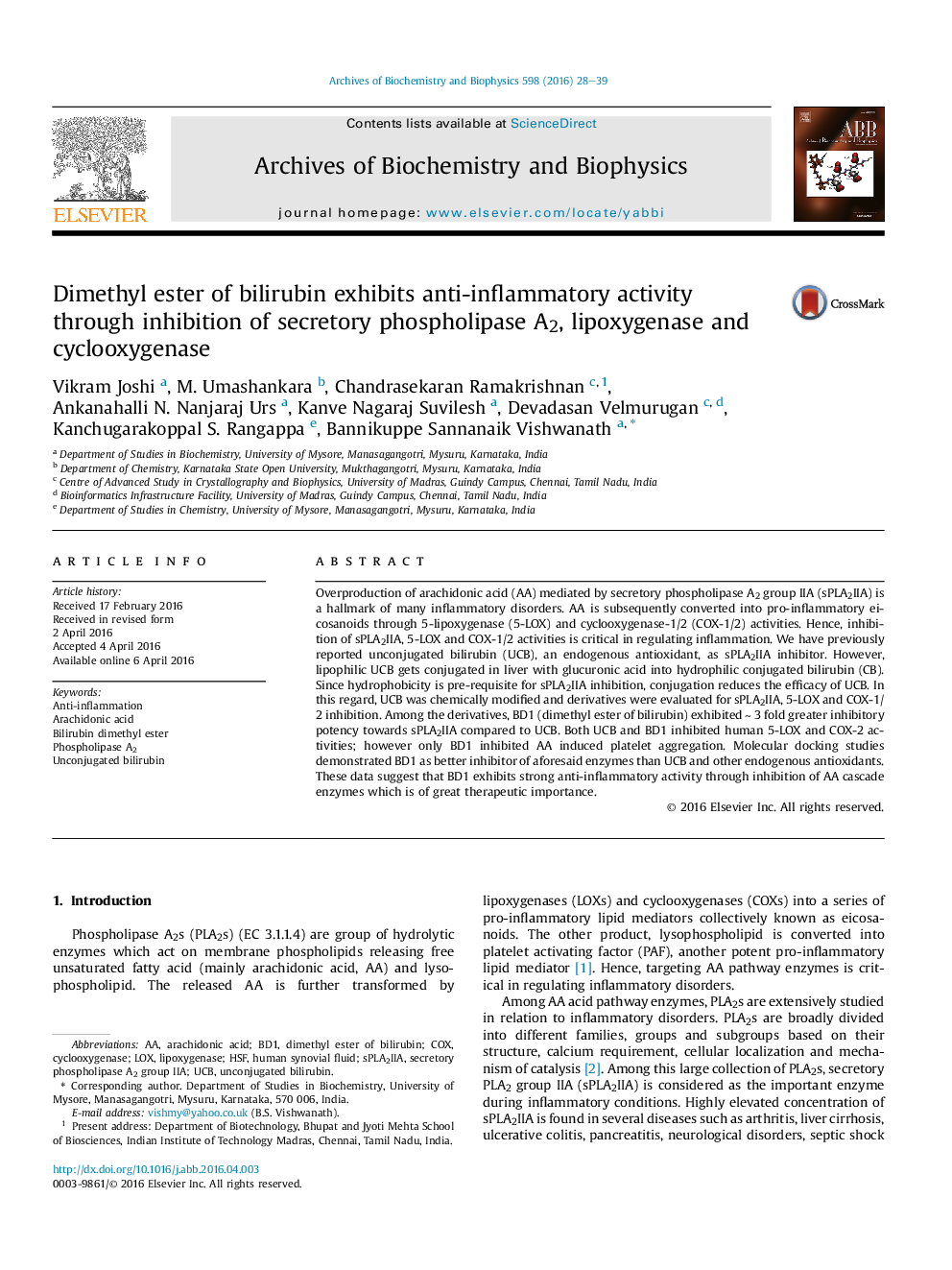| کد مقاله | کد نشریه | سال انتشار | مقاله انگلیسی | نسخه تمام متن |
|---|---|---|---|---|
| 1924730 | 1536305 | 2016 | 12 صفحه PDF | دانلود رایگان |

• UCB inhibits sPLA2IIA, 5-LOX and COX-2 activities.
• Conjugation diminishes anti-inflammatory activities of UCB.
• UCB was chemically modified to prevent conjugation.
• BD1 inhibits sPLA2IIA, 5-LOX and COX-1/2 activities better than UCB.
• Strong anti-inflammatory activities of BD1 is of great therapeutic value.
Overproduction of arachidonic acid (AA) mediated by secretory phospholipase A2 group IIA (sPLA2IIA) is a hallmark of many inflammatory disorders. AA is subsequently converted into pro-inflammatory eicosanoids through 5-lipoxygenase (5-LOX) and cyclooxygenase-1/2 (COX-1/2) activities. Hence, inhibition of sPLA2IIA, 5-LOX and COX-1/2 activities is critical in regulating inflammation. We have previously reported unconjugated bilirubin (UCB), an endogenous antioxidant, as sPLA2IIA inhibitor. However, lipophilic UCB gets conjugated in liver with glucuronic acid into hydrophilic conjugated bilirubin (CB). Since hydrophobicity is pre-requisite for sPLA2IIA inhibition, conjugation reduces the efficacy of UCB. In this regard, UCB was chemically modified and derivatives were evaluated for sPLA2IIA, 5-LOX and COX-1/2 inhibition. Among the derivatives, BD1 (dimethyl ester of bilirubin) exhibited ∼ 3 fold greater inhibitory potency towards sPLA2IIA compared to UCB. Both UCB and BD1 inhibited human 5-LOX and COX-2 activities; however only BD1 inhibited AA induced platelet aggregation. Molecular docking studies demonstrated BD1 as better inhibitor of aforesaid enzymes than UCB and other endogenous antioxidants. These data suggest that BD1 exhibits strong anti-inflammatory activity through inhibition of AA cascade enzymes which is of great therapeutic importance.
Figure optionsDownload high-quality image (186 K)Download as PowerPoint slide
Journal: Archives of Biochemistry and Biophysics - Volume 598, 15 May 2016, Pages 28–39